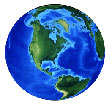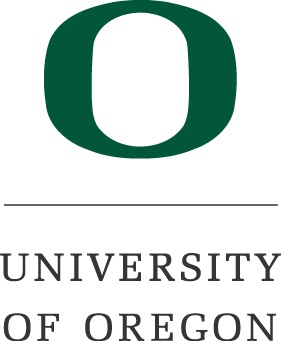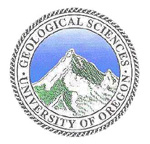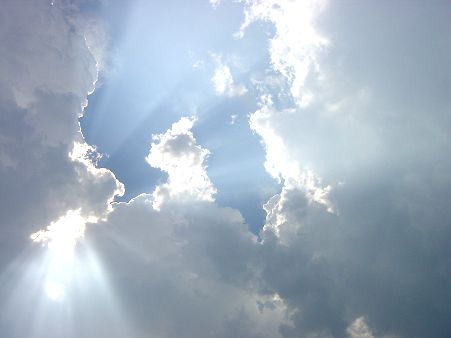ETOMO: Endeavour Seismic Tomography Experiment
Link to ETOMO cruise report.
 SYNOPSIS: Competing models for what controls the segmentation
and intensity of ridge crest processes are at odds on the
scale of mantle and crustal magmatic segmentation, the
distribution of hydrothermal venting with respect to a
volcanic segment and the properties of the thermal boundary
layer that transports energy between the magmatic and hydrothermal
systems. The recent discovery of an axial magma chamber
(AMC) reflector beneath the Endeavour segment of the Juan
de Fuca ridge, as well as systematic along axis changes
in seafloor depth, ridge crest morphology and hydrothermal
venting provide an ideal target for testing conflicting
hypotheses. In 2008 we will conduct a seismic experiment
to investigate the 3-D structure of the crust and topmost
mantle beneath the Endeavour segment, a RIDGE2000 Integrated
Study Site (ISS). The scientific objectives are to: (1)
Determine if the segmentation and intensity of the magma-hydrothermal
systems at the Endeavour ridge are related to magma supply
or to the magma plumbing between the mantle and crust,
and (2) Constrain the thermal and magmatic structure underlying
the Endeavour hydrothermal system in order to understand
the patterns of energy transfer.
SYNOPSIS: Competing models for what controls the segmentation
and intensity of ridge crest processes are at odds on the
scale of mantle and crustal magmatic segmentation, the
distribution of hydrothermal venting with respect to a
volcanic segment and the properties of the thermal boundary
layer that transports energy between the magmatic and hydrothermal
systems. The recent discovery of an axial magma chamber
(AMC) reflector beneath the Endeavour segment of the Juan
de Fuca ridge, as well as systematic along axis changes
in seafloor depth, ridge crest morphology and hydrothermal
venting provide an ideal target for testing conflicting
hypotheses. In 2008 we will conduct a seismic experiment
to investigate the 3-D structure of the crust and topmost
mantle beneath the Endeavour segment, a RIDGE2000 Integrated
Study Site (ISS). The scientific objectives are to: (1)
Determine if the segmentation and intensity of the magma-hydrothermal
systems at the Endeavour ridge are related to magma supply
or to the magma plumbing between the mantle and crust,
and (2) Constrain the thermal and magmatic structure underlying
the Endeavour hydrothermal system in order to understand
the patterns of energy transfer.
 EXPERIMENT: An active source seismic
tomography experiment, using an array of 64 three-component
ocean-bottom seismometers, will image the 3-D seismic structure
of the crust and topmost mantle along an 80-km-long section
of the Endeavour ridge. The experiment will image four
targets: (1) crustal thickness variations within 25 km
of the axial high (0 to 900 kyr); (2) the 2-D (i.e., map
view) structure of the uppermost mantle beneath the spreading
axis; (3) the 3-D structure of the crustal magmatic system
and (4) the detailed 3-D, shallow crustal thermal structure
beneath the Endeavour vent field. The results of imaging
will define the recent history of magma supply, the pattern
of melt delivery from the mantle to the crust and the structure
and segmentation of the subseafloor magmatic and hydrothermal
systems. These measurements are essential to testing critically competing
hypotheses for what regulates the intensity of ridge crest magmatic and
hydrothermal processes.
EXPERIMENT: An active source seismic
tomography experiment, using an array of 64 three-component
ocean-bottom seismometers, will image the 3-D seismic structure
of the crust and topmost mantle along an 80-km-long section
of the Endeavour ridge. The experiment will image four
targets: (1) crustal thickness variations within 25 km
of the axial high (0 to 900 kyr); (2) the 2-D (i.e., map
view) structure of the uppermost mantle beneath the spreading
axis; (3) the 3-D structure of the crustal magmatic system
and (4) the detailed 3-D, shallow crustal thermal structure
beneath the Endeavour vent field. The results of imaging
will define the recent history of magma supply, the pattern
of melt delivery from the mantle to the crust and the structure
and segmentation of the subseafloor magmatic and hydrothermal
systems. These measurements are essential to testing critically competing
hypotheses for what regulates the intensity of ridge crest magmatic and
hydrothermal processes.
Statement of Broader Impacts: As part of the RIDGE2000 science program, this project will be an important part of understanding the flow of energy from the mantle to the water column that supports unique ecosystems which are not dependent on photosynthesis and that drives hydrothermal circulation which produces concentrated mineral deposits. The research program will involve both graduate and undergraduate students, contributing to their technical training.
Statement of Intellectual Impact: This experiment will provide critical tests of competing models for what controls the segmentation and intensity of ridge crest processes. By imaging mantle and crustal structure at several scales it will define the pattern of melt injection from the mantle to the crust, the segmentation of crustal magmatic systems, the location of crustal heat sources and their relations to hydrothermal circulation.




